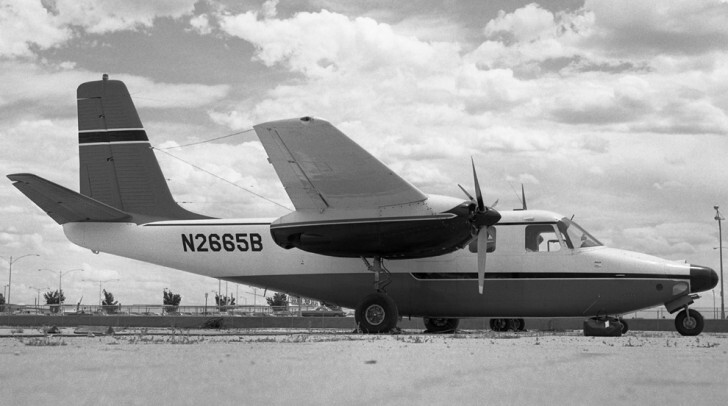By Barry Collman
First published in Flight Levels Online, Summer 2013 issue

The Model 560A was the third Twin Commander model to be placed into production, all by the Aero Design & Engineering Company at Tulakes Airport (later renamed Wiley Post) in Bethany, Oklahoma City, Oklahoma.
On the face of it, 100 examples were built between July 1955 and December 1956, with serial numbers in the range 231 through 450. However, 15 of these had an optional engine and were given the factory designation 560A(HC), with the “HC” meaning High Compression.
Of the 85 examples built of the basic 560A, 54 were initially certified in 1955 and 31 in 1956.
Of the 15 examples of the 560A(HC) that were built, 14 were initially certified in 1956, but the last one, serial number 450, did not receive its Certificate of Airworthiness until quite a bit later, in February 1957.
The first 560A(HC) received its Certificate of Airworthiness on November 20, 1956. Soon after it was converted to the first example of the Model 560E and received a new Certificate of Airworthiness dated March 11, 1957.
Along with the 15 560A(HC)s that were built as such, 14 more were later created by converting basic Model 560As.

N124JP is serial number 312 560A(HC), the second one built. When photographed here in June 1995, it showed no sign of being in its 40th year. It is still operating today. Owned by John L. Peroyea of Midlothian, Texas, it appeared in the opening sequences of the 1996 film “Heaven’s Prisoners.” It has had some “Shrike Alike” modifications including cockpit overhead windows, a squared vertical fin tip, and a new tail cone. Other mods are the winglets and a Chamberlain 3066X nose radome.
The Model 560A was added to Type Certificate 6A1 on July 1, 1955 with this notation: “Same as Model 560 except for engine installation, longer fuselage, structural changes to the wing, new landing gear design and revised fuel and oil systems.”
The 560A(HC) was considered an optional version of the 560A, so was not added to the type certificate as a new model.
The basic 560A had 275-hp Lycoming GO-480-D1A engines with a compression ratio of 7.30:1. The optional 560A(HC) version had 295-hp Lycoming GO-480-C1B6 engines with a compression ratio of 8.70:1. Both versions used the 84-in-diameter three-blade Hartzell HC-83X20-2C/8433 propellers. Many 560As later were converted to the GO-480-G1B6 HC engine.
One example, N2646B, serial number 358, was leased by Randolph A. and David W. Hearst to the Hughes Aircraft Company of Culver City, California. Another, N2736B, serial number 390, was owned by Riley Aircraft in Fort Lauderdale, Florida.
Please see the introduction to the Model 560A (Flight Levels, Spring 2013, www.flightlevelsonline) for further details.
Barry Collman’s lifelong interest in airplanes began when he was growing up in a house located underneath the downwind leg to busy Northolt aerodrome, an R.A.F. base near London-Heathrow airport. As a young teenager he discovered airplane “spotting” –– hobbyists’ observation and logging of aircraft by make, model, and registration number. The hobby began to grow into a passion as Collman joined a club of like-minded spotters. At one point he purchased a copy of the January 1966 U.S. Civil Aircraft Register, and thumbing through it came upon the Aero Commander. He was hooked. Eventually he acquired every available FAA microfiche file on Commanders, and since 1995 has made annual pilgrimages to Oklahoma City to sift through FAA records. He now has a database with more than 96,100 records as well as a collection of negatives, slides, photographs, digital images, magazines, brochures, knick-knacks –– and a very understanding wife. This series on Commander production history originally was written for the Twin Commander Flight Group, of which he is an enthusiastic member.
